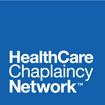Building and Maintaining a Chaplaincy Department
Course Author: The Rev. George Handzo, BCC, CSSBB
Building and maintaining a chaplaincy department is the core responsibility of chaplain directors, managers, and other leaders. This module addresses the basics involved in developing a department, whether as a new director or one who wishes to ensure that the department enhances the work of chaplaincy, contributes to the organization, and meets regulatory guidelines. Through a step-by-step process this module, Building and Maintaining a Chaplaincy Department, provides the student with resources and samples of the details to be addressed, including planning and implementation.
By the end of this course the learner will be able to:
- Understand the steps in deciding what kind of job is right for their interest, skills, and competencies.
- Understand the steps in pursuing and securing the identified job.
- Describe why cultivating leadership is important.
- Identify the role of other disciplines in spiritual care.
- Demonstrate an understanding of the chaplain’s scope of practice the competencies required of his or her role and the discipline’s scope of practice.
- Describe the current best practices for integrating spiritual care- including the goals of spiritual care, current implementation models, and how they integrate with treatment plans.
- Demonstrate a working knowledge of the key physical, psychological, and social issues/principles in spiritual care.
- Understand the government regulations that are germane to spiritual care including determination of capacity, confidentiality, reporting of suspected domestic violence.
- Understand the process for writing a mission and vision statement for chaplaincy.
- Describe the steps in writing strategic plan for chaplaincy.
- Describe the steps in writing an implementation plan and obtaining buy-in from institutional administration.
- Describe the case for allocation and equipping of dedicated space for prayer, meditation, and spiritual practice taking into account the particular cultural, ethnic and religious needs of the community.
- Identify the components of department policy and procedure which support effective chaplaincy integration.
- Identify the elements of a robust end of life and bereavement care program for chaplaincy.
- Identify components of a plan to inform clients, families, and staff of spiritual care services and how to access them including local faith communities, belief groups and other community resources.
- Identify components of a plan to develop and maintain links to local faith communities, belief groups and other community resources.
- Identify the components of a plan to provide education in generalist spiritual care to all disciplines.
- Identify chaplaincy services that facilitate cultural, religious and spiritual observance by clients, families and staff.
- Discuss 3 reasons for doing research in spiritual care.
- Describe the basic steps of research including participating on a research team, research ethics, choosing the question, design, methods, analytic tools, and dissemination plan.
- Name three expert sources of research data and best practices in spiritual care research.
- Evaluate and critique simple research studies.
Course Outline
- Introduction
- The Search Process
- Getting the Job: Doing Your Homework on the Institution
- The Difference Between Management and Leadership
- The Role of Other Disciplines in Spiritual Care
- Chaplaincy’s Scope of Practice, Competencies, and Best Practices
- Building Relationships and Identifying Chaplaincy Supporters
- Key Physical, Psychological, and Social Issues/Principles in Spiritual Care
- The Business Case for Professional Health Care Chaplaincy: Major Evidence and Its Significance
- Current Trends in National and Local Health Care: Opportunities and Threats
- Government Regulations Germane to Spiritual Care
- Writing a Mission and Vision Statement for Chaplaincy
- Writing an Implementation Plan and Obtaining Buy-in from Institutional Administration
- Department Policies and Procedures for Supporting Effective Chaplaincy Integration
- Suggested Policy and Procedure Topics to Include
- Supporting and Doing Research
- Summary
- Recommended Resources
- References
Number of Continuing Education Hours: 30
Credit towards Board Certification Requirements: 1
Aligns with the following Quality Indicators in What is Quality Spiritual Care in Health Care and How Do You Measure It? (HCCN. 2016).
- Structural Indicator 1.A. Chaplains as certified or credentialed spiritual care professional(s) are provided proportionate to the size and complexity of the unit served and officially recognized as integrated/embedded members of the clinical staff.
- Structural Indicator 1.B. Dedicated space is available for meditation, reflection and ritual.
- Structural Indicator 1.C. Information is provided about the availability of spiritual care services.
- Structural Indicator 1.D. Professional education and development programs in spiritual care are provided for all disciplines on the team to improve their provision of generalist spiritual care.
- Structural Indicator 1.E. Spiritual care quality measures are reported regularly as part of the organization’s overall quality program and are used to improve practice.
- Process Indicator 2.A. Specialist spiritual care is made available within a time frame appropriate to the nature of the referral.
- Process Indicator 2.B. All clients are offered the opportunity to have a discussion of religious/spiritual concerns.
- Process Indicator 2.C. An assessment of religious, spiritual, and existential concerns using a structured instrument is developed and documented, and the information obtained from the assessment is integrated into the overall care plan.
- Process Indicator 2.D. Spiritual, religious, cultural practices are facilitated for clients, the people important to them, and staff.
- Process Indicator 2.E. Families are offered the opportunity to discuss spiritual issues during goals of care conferences.
- Process Indicator 2.F. Spiritual care is provided in a culturally and linguistically appropriate manner. Clients’ values and beliefs are integrated into plans of care.
- Process Indicator 2.G. End of life and Bereavement Care is provided as appropriate to the population served.

